Planetary Nebula Mz3: The Ant Nebula By R. Sahai

Planetary Nebula Mz3: The Ant Nebula by R. Sahai
More Posts from Intergalacticnerd and Others

Using the advanced adaptive optics system on the Gemini South telescope, astronomers have imaged a beautiful stellar jewel-box – a tightly packed cluster of stars that is one of the few places in our galaxy where astronomers think stars can actually collide. Stellar collisions are important because they can provide the key to understand the origin of exotic objects that cannot be interpreted in terms of the passive evolution of single stars. read more here credit: Gemini Observatory/AURA
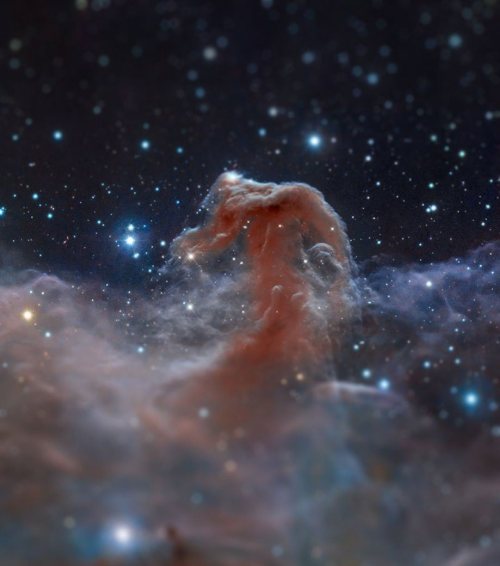
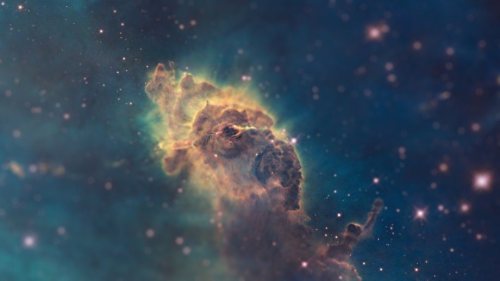
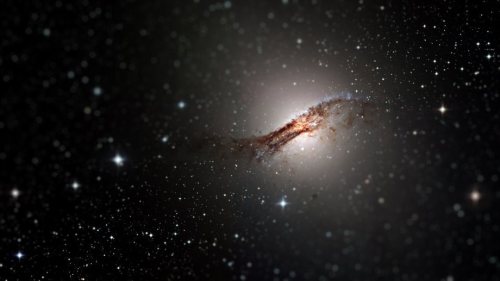
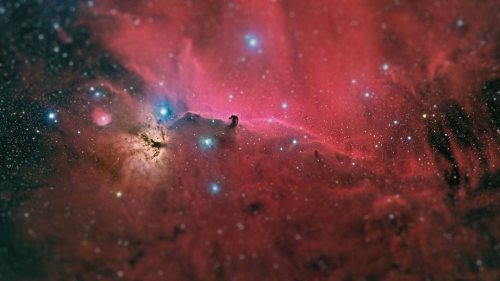
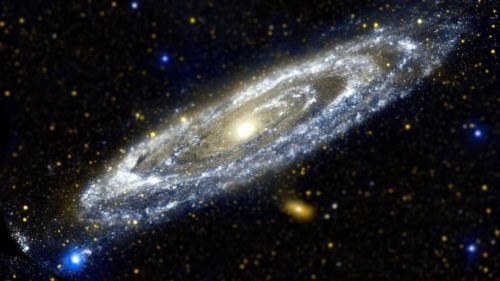
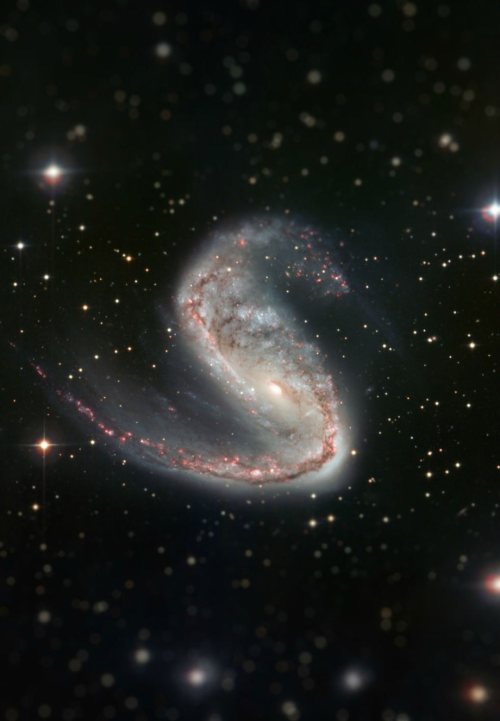
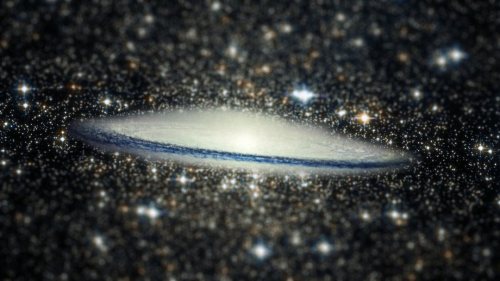
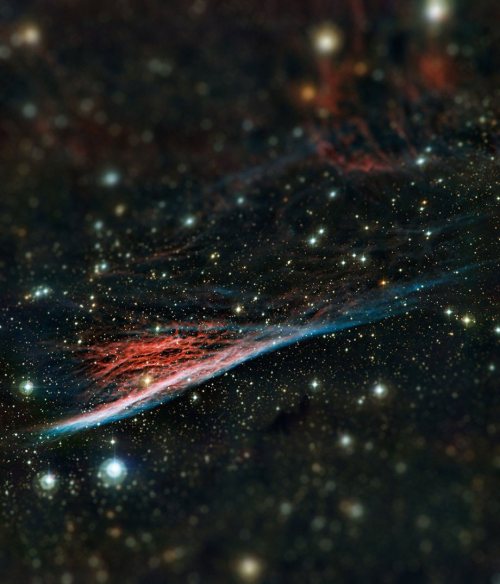
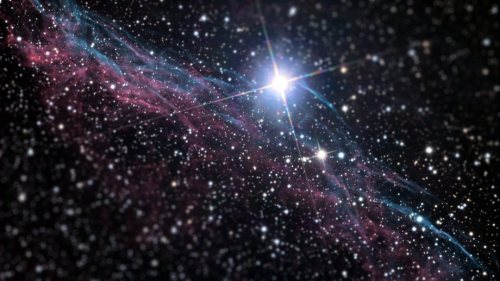
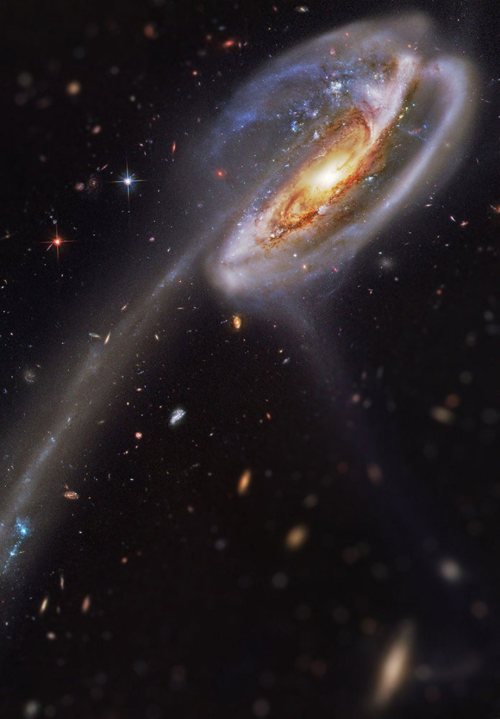
Tilt Shift filters applied to Hubble Space Telescope photos.
Tilt Shift filters make the foreground and background of images more blurred, changing the depth of field of these images.
(x)
[Click for more interesting science facts and gifs]

Gravitational Waves Exist: The Inside Story of How Scientists Finally Found Them
How a group of scientists proved Einstein right—and expanded our view of the universe.
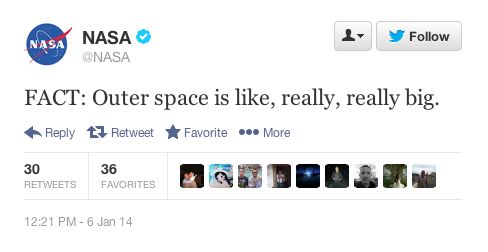
The Shakespearean Moons of Uranus
This weekend marks the 400th anniversary of Shakespeare’s death, and we’re highlighting the moons of Uranus; some of which are named after characters from his works.

While most of the moons orbiting other planets take their names from Greek mythology, Uranus’ moons are unique in bing named for Shakespearean characters, along with a couple of them being named for characters from the works of Alexander Pope.

Using the Hubble Space Telescope and improved ground-based telescopes, astronomers have discovered a total of 27 known moons around Uranus.
Here’s a sampling of some of the unique aspects of the moons:
Miranda

Shakespearean work: The Tempest
Miranda, the innermost and smallest of the five major satellites, has a surface unlike any other moon that’s been seen. It has a giant fault canyon as much as 12 times as deep as the Grand Canyon, terraced layers and surfaces that appear very old, and others that look much younger.
Ariel

Shakespearean work: The Tempest
Ariel has the brightest and possibly the youngest surface among all the moons of Uranus. It has a few large craters and many small ones, indicating that fairly recent low-impact collisions wiped out the large craters that would have been left by much earlier, bigger strikes. Intersecting valleys pitted with craters scars its surface.
Oberon

Shakespearean work: A Midsummer Night’s Dream
Oberon, the outermost of the five major moons, is old, heavily cratered and shows little signs of internal activity. Unidentified dark material appears on the floors of many of its craters.
Cordelia and Ophelia

Shakespearean works: Cordelia - King Lear; Ophelia - Hamlet
Cordelia and Ophelia are shepherd moons that keep Uranus’ thin, outermost “epsilon” ring well defined.
Between them and miranda is a swarm of eight small satellites unlike any other system of planetary moons. This region is so crowded that astronomers don’t yet understand how the little moons have managed to avoid crashing into each other. They may be shepherds for the planet’s 10 narrow rings, and scientists think there must be still more moons, interior to any known, to confine the edges of the inner rings.
Want to learn more about all of Uranus’s moons? Visit: http://solarsystem.nasa.gov/planets/uranus/moons
Check out THIS blog from our Chief Scientist Ellen Stofan, where she reflects on the life and legacy of William Shakespeare on the 400th anniversary of his death on April 23, 1616.
Make sure to follow us on Tumblr for your regular dose of space: http://nasa.tumblr.com
What Happened to Mars?
Billions of years ago, Mars was a very different world. Liquid water flowed in long rivers that emptied into lakes and shallow seas. A thick atmosphere blanketed the planet and kept it warm.

Today, Mars is bitter cold. The Red Planet’s thin and wispy atmosphere provides scant cover for the surface below.

Our MAVEN Mission
The Mars Atmosphere and Volatile EvolutioN (MAVEN) mission is part of our Mars Scout program. This spacecraft launched in November 2013, and is exploring the Red Planet’s upper atmosphere, ionosphere and interactions with the sun and solar wind.

The purpose of the MAVEN mission is to determine the state of the upper atmosphere of Mars, the processes that control it and the overall atmospheric loss that is currently occurring. Specifically, MAVEN is exploring the processes through which the top of the Martian atmosphere can be lost to space. Scientists think that this loss could be important in explaining the changes in the climate of Mars that have occurred over the last four billion years.
New Findings
Today, Nov. 5, we will share new details of key science findings from our ongoing exploration of Mars during a news briefing at 2 p.m. EDT. This event will be broadcast live on NASA Television. Have questions? Use #askNASA during the briefing.
Make sure to follow us on Tumblr for your regular dose of space: http://nasa.tumblr.com
What’s Up for March 2016?
In March, Jupiter, it’s moons and moon shadows will all be visible in the sky. Find out when and where to look up:

Jupiter dominates the evening sky this month, rising at sunset and setting at dawn. On March 8, Jupiter reaches what is called “opposition”. Imagine that Jupiter and the sun are at opposite ends of a straight line, with the Earth in between. This brings Jupiter its closest to Earth, so it shines brighter and appears larger in telescopes.

On the nights of March 14 – 15, March 21 – 22 and March 29, two of Jupiter’s moons will cross the planet’s disk.

When the planet is at opposition and the sun shines on Jupiter’s moons, we can see the moon’s shadow crossing the planet. There are actually 11 of these double shadow transits in March!

The next six months will be awesome times for you to image Jupiter when it’s highest in the sky; near midnight now, and a little earlier each night through the late summer.
Even through the smallest telescopes or binoculars, you should be able to see the two prominent belts on each side of Jupiter’s equator made up of the four Galilean moons: Io, Europa Ganymede and Calisto. If you have a good enough view, you may even see Jupiter’s Red Spot!

Our Juno spacecraft will arrive at Jupiter on July 4th of this year and will go into orbit around the giant planet. Right now, the Juno mission science team is actively seeking amateur and professional images of the planet. These images are uploaded to a Juno website, and the public is invited to discuss points of interest in Jupiter’s atmosphere.

Locations will later be voted on and the favorites will be targets for JunoCam, the spacecraft’s imaging camera. Once JunoCam has taken the images, they’ll be posted online. Imaging participants can then process these raw mission images and re-upload them for others to view.

Make sure to follow us on Tumblr for your regular dose of space: http://nasa.tumblr.com




Einstein’s gravitational waves found at last
One hundred years after Albert Einstein predicted the existence of gravitational waves, scientists have finally spotted these elusive ripples in space-time.
In a highly anticipated announcement, physicists with the Advanced Laser Interferometer Gravitational-Wave Observatory (LIGO) revealed on 11 February that their twin detectors have heard the gravitational ‘ringing’ produced by the collision of two black holes about 400 megaparsecs (1.3 billion light-years) from Earth.
“Ladies and gentlemen, we have detected gravitational waves,” David Reitze, the executive director of the LIGO Laboratory, said at a Washington DC press conference. “We did it!”
Continue reading via source: Nature
Infographic: Nik Spencer/Nature
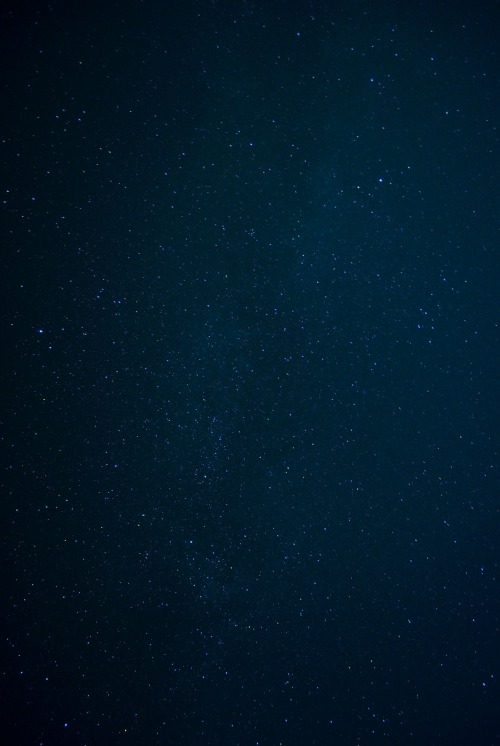
some of my favourite absolutely SICK facts about the trappist-1 exoplanets: - theyre all very close to one another and to their star, so the length of a year on them varies from 1 to 20 DAYS - since they’re so close, the star appears a lot bigger than our sun from earth, and from one planet you could easily see the rest, some would even appear bigger than the moon from earth. you could literally see the surface of another planet with a naked eye!!! - they’re tidally locked to their star like our moon is locked to earth, meaning only one side of a planet ever faces the star, and on the other side it’s always night. the sun never sets or rises on any of the planets - the star is red, so the sunlight is red/orange, meaning if, for example, plants were to grow there, they could be black and that’s just what we know now, imagine how much cool stuff we have yet to discover about the trappist-1 system
-
 burnbouquetbarba-blog reblogged this · 6 years ago
burnbouquetbarba-blog reblogged this · 6 years ago -
 burnbouquetbarba-blog liked this · 6 years ago
burnbouquetbarba-blog liked this · 6 years ago -
 amne-chan liked this · 7 years ago
amne-chan liked this · 7 years ago -
 holligenet reblogged this · 8 years ago
holligenet reblogged this · 8 years ago -
 juba2205-blog liked this · 8 years ago
juba2205-blog liked this · 8 years ago -
 chichicastle liked this · 8 years ago
chichicastle liked this · 8 years ago -
 moonyrocks liked this · 8 years ago
moonyrocks liked this · 8 years ago -
 holligenet liked this · 8 years ago
holligenet liked this · 8 years ago -
 boltzblitz liked this · 8 years ago
boltzblitz liked this · 8 years ago -
 sniacy-lukasz reblogged this · 9 years ago
sniacy-lukasz reblogged this · 9 years ago -
 asteri4z liked this · 9 years ago
asteri4z liked this · 9 years ago -
 vardaelcntari liked this · 9 years ago
vardaelcntari liked this · 9 years ago -
 khonsus liked this · 9 years ago
khonsus liked this · 9 years ago -
 deadelusion liked this · 9 years ago
deadelusion liked this · 9 years ago -
 ghostfan reblogged this · 9 years ago
ghostfan reblogged this · 9 years ago -
 ghostfan liked this · 9 years ago
ghostfan liked this · 9 years ago -
 foxyfolk reblogged this · 9 years ago
foxyfolk reblogged this · 9 years ago -
 mysticgazelle reblogged this · 9 years ago
mysticgazelle reblogged this · 9 years ago -
 deadz0ne14-blog reblogged this · 9 years ago
deadz0ne14-blog reblogged this · 9 years ago -
 coconuthail reblogged this · 9 years ago
coconuthail reblogged this · 9 years ago -
 coconuthail liked this · 9 years ago
coconuthail liked this · 9 years ago -
 ex-vd liked this · 9 years ago
ex-vd liked this · 9 years ago -
 heavenly-garden reblogged this · 9 years ago
heavenly-garden reblogged this · 9 years ago -
 heavenly-garden liked this · 9 years ago
heavenly-garden liked this · 9 years ago -
 cosmicfox reblogged this · 9 years ago
cosmicfox reblogged this · 9 years ago -
 nothing-but-nebulae-blog reblogged this · 9 years ago
nothing-but-nebulae-blog reblogged this · 9 years ago -
 nothing-but-nebulae-blog liked this · 9 years ago
nothing-but-nebulae-blog liked this · 9 years ago -
 asimozouzouna reblogged this · 9 years ago
asimozouzouna reblogged this · 9 years ago -
 asimozouzouna liked this · 9 years ago
asimozouzouna liked this · 9 years ago -
 briana-davis14 liked this · 9 years ago
briana-davis14 liked this · 9 years ago -
 requinrequiem reblogged this · 9 years ago
requinrequiem reblogged this · 9 years ago -
 in-absenti-a reblogged this · 9 years ago
in-absenti-a reblogged this · 9 years ago -
 knifebinch liked this · 9 years ago
knifebinch liked this · 9 years ago -
 wandering-camera-blog liked this · 9 years ago
wandering-camera-blog liked this · 9 years ago -
 pig-warship liked this · 9 years ago
pig-warship liked this · 9 years ago -
 solicittude-blog liked this · 9 years ago
solicittude-blog liked this · 9 years ago -
 rainboompop-blog liked this · 9 years ago
rainboompop-blog liked this · 9 years ago -
 shadowkittyfortress liked this · 9 years ago
shadowkittyfortress liked this · 9 years ago -
 hazel-nova reblogged this · 9 years ago
hazel-nova reblogged this · 9 years ago -
 the-nerdy-heathen reblogged this · 9 years ago
the-nerdy-heathen reblogged this · 9 years ago
"Astronomy compels the soul to look upwards and leads us from this world to another." - Plato
147 posts